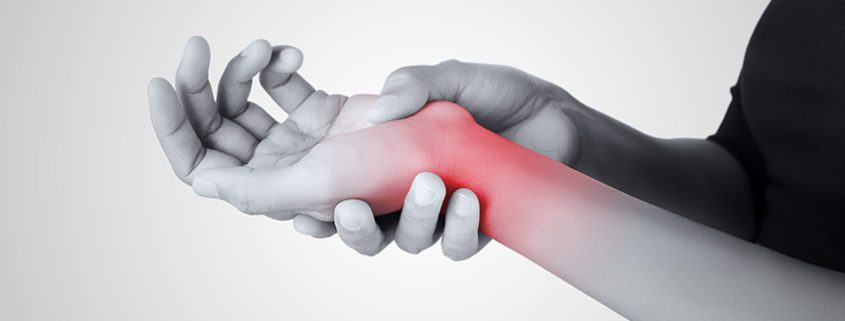Carpal Tunnel Syndrome: Causes, Symptoms, and Treatments
Description
Carpal tunnel syndrome is essentially a pinched nerve in the wrist. There is a space in the wrist called the carpal tunnel where the median nerve and nine tendons pass from the forearm into the hand (Figure 1). Carpal tunnel syndrome happens when swelling in this tunnel puts pressure on the nerve.
Causes
Pressure on the nerve can happen several ways, including:
- Swelling of the lining of the flexor tendons, called tenosynovitis
- Joint dislocations
- Fractures
- Arthritis
- Fluid build-up during pregnancy
The scenarios listed above can narrow the carpal tunnel or cause swelling in the tunnel. Thyroid conditions, rheumatoid arthritis and diabetes can also be associated with carpal tunnel syndrome. Ultimately, there can be many causes of this condition.
Signs & Symptoms
Symptoms of this condition can include:
- Pain
- Numbness
- Tingling
- Weak grip
- Occasional clumsiness
- Tendency to drop things
The numbness or tingling most often takes place in the thumb, index, middle and ring fingers. The symptoms usually are felt during the night but may also be noticed during daily activities such as driving or reading a newspaper. In bad cases, sensation and strength may be permanently lost.
How Your Doctor Will Diagnose Carpal Tunnel
A detailed history including medical conditions, how the hands have been used, and any prior injuries is important in diagnosing carpal tunnel syndrome. An x-ray may be taken to check for arthritis or a fracture. In some cases, laboratory tests may be done. Electrodiagnostic studies are also a possibility to confirm the diagnosis and check for other possible nerve problems.
Treatment
Symptoms may often be relieved without surgery. Some treatment options are:
- Changing patterns of hand use (helps reduce pressure on the nerve)
- Keeping the wrist splinted in a straight position (helps reduce pressure on the nerve)
- Wearing wrist splints at night (helps relieve symptoms that may prevent sleep)
- Steroid injections into the carpal tunnel (helps reduce swelling around the nerve)
When symptoms are severe or do not improve, surgery may be needed to make more room for the nerve. Pressure on the nerve is decreased by cutting the ligament that forms the top of the tunnel on the palm side of the hand (Figure 2). Following surgery, soreness around the cut area may last for several weeks or months. The numbness and tingling may disappear quickly or slowly.
Recovery may take several months. Carpal tunnel symptoms may not completely go away after surgery, especially in severe cases.
© 2015 American Society for Surgery of the Hand.
Orthopedic Sports Medicine Center of Oregon is located in Downtown Portland Oregon. Dr. Dominic Patillo, one of our Board-Certified Orthopedic Surgeons, specializes in hand surgery. His practice focuses on the treatment of both simple and complex hand and upper extremity conditions as well as general orthopaedic trauma. He is experienced with modern microsurgical techniques including nerve and vessel reconstruction.
Common problems treated include:
- carpal tunnel syndrome
- tennis elbow
- wrist pain
- sports injuries of the hand and wrist
- fractures of the hand, wrist, and forearm
- trigger finger
Other problems treated can include arthritis, nerve and tendon injuries, and congenital limb differences (birth defects).
If you have pain in your fingers, hand, wrist or arm, or if you have other upper-extremity related concerns, please consult our hand specialist Dr. Dominic Patillo for a consultation.




